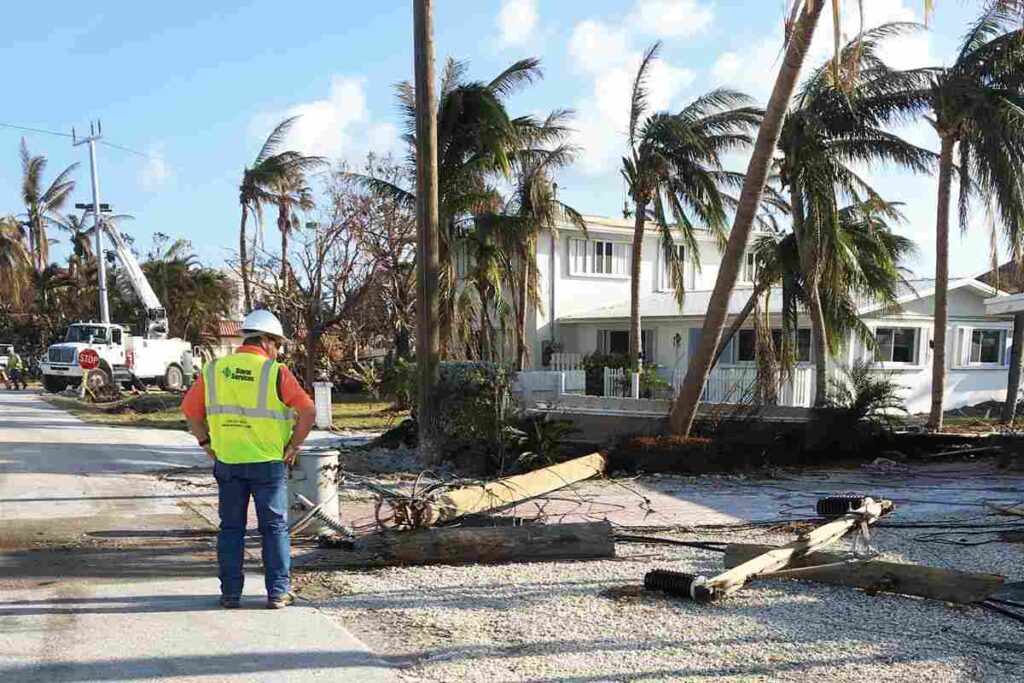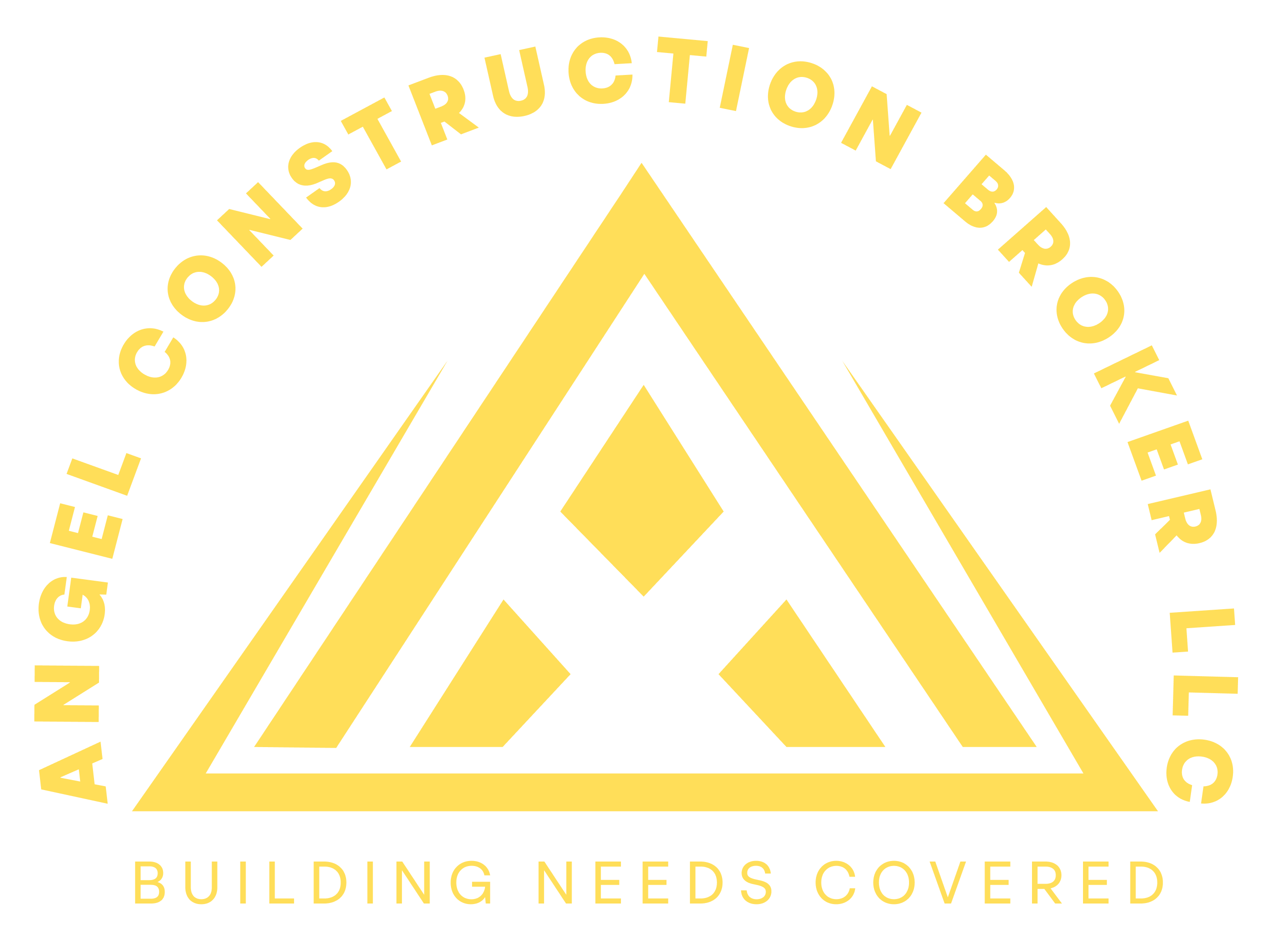Attempting storm restoration without professional help can pose significant dangers. Untrained individuals face a high risk of injury from unstable structures, downed power lines, and hidden hazards like sharp debris or contaminated water. Additionally, improper handling of restoration can lead to inadequate repairs, worsening damage, and potential health risks from mold or other contaminants. Professionals of Angel Construction Broker LLC are equipped with the necessary skills, knowledge, and safety gear to handle these tasks safely and effectively. Without their expertise, not only is there a risk to personal safety, but also to the integrity and safety of the property, making professional intervention crucial in storm restoration efforts.
Safety Risks
Attempting storm restoration without professional help can expose you to numerous safety risks. Storm-damaged environments are often hazardous, with structural instability, fallen debris, exposed electrical wires, and potential gas leaks. Navigating these dangers requires specialized knowledge and equipment that the average homeowner is unlikely to possess. For example, fallen trees can create unstable conditions that might lead to further damage or injury if not properly handled. Additionally, waterlogged areas can hide electrical hazards, increasing the risk of electrocution. Professionals are trained to assess and mitigate these risks effectively, ensuring their safety and the safety of the property.
Incomplete Restoration
One of the primary dangers of DIY storm restoration is the risk of incomplete restoration. Storm damage can be extensive and multifaceted, often involving structural, electrical, plumbing, and aesthetic repairs. Without a comprehensive understanding of all these aspects, it’s easy to overlook critical areas that need attention. For instance, hidden water damage behind walls can lead to mold growth, which poses serious health risks and can further deteriorate the structure if left unaddressed. By contrast, a DIY approach may result in superficial repairs that do not resolve underlying problems, leading to more significant issues down the line and potentially higher costs for future repairs.
Incorrect Repairs

Incorrect repairs are another significant risk of attempting storm restoration without professional assistance. Different types of damage require specific repair techniques and materials. For example, repairing a roof requires knowledge of roofing materials, proper sealing techniques, and an understanding of the overall roof structure. Using incorrect materials or methods can lead to leaks, structural weaknesses, and even roof collapse in severe cases. Professionals have the training and experience to perform these repairs correctly, ensuring the safety and integrity of the property. In contrast, DIY repairs, even if they seem to work initially, can fail over time due to improper execution, leading to more extensive and costly damage.
Insurance Issues
Navigating insurance claims for storm damage can be complex and challenging. Insurance companies require detailed documentation and accurate assessments of the damage to process claims. Without professional help, you may struggle to provide the necessary evidence to support your claim, potentially leading to denied or reduced payouts. Professionals can provide detailed reports, photographs, and estimates that meet insurance company requirements, increasing the likelihood of a successful claim.
Attempting DIY repairs could void your insurance coverage, leaving you responsible for all costs associated with the restoration. By hiring professionals, you ensure that all work is performed to industry standards and that your insurance coverage remains valid.
Time and Cost
While DIY storm restoration may seem like a cost-saving measure, it often ends up being more expensive in the long run. The lack of expertise and proper equipment can lead to mistakes that require additional repairs, increasing both the time and cost involved. Professionals work efficiently, leveraging their experience and tools to complete the restoration quickly and correctly the first time.
Professionals can quickly mobilize resources and begin restoration work immediately, minimizing the time your property remains in a vulnerable state. In contrast, a DIY approach may take significantly longer, increasing the risk of additional damage and higher repair costs.
Lack of Equipment
Storm restoration often requires specialized equipment that the average homeowner does not have. This includes items like industrial-grade water extractors, dehumidifiers, air movers, and heavy-duty tools for debris removal and structural repairs. Professionals have access to this equipment, enabling them to perform the restoration work effectively and efficiently.
Additionally, professionals use advanced tools to dry out water-damaged areas, preventing mold growth and further structural damage. Without these tools, DIY efforts are likely to be less effective, leaving your property at risk for future issues.
Compliance and Regulations
Storm restoration must adhere to local building codes, safety regulations, and environmental standards. These regulations are in place to ensure the safety, functionality, and sustainability of restored properties. Professionals are familiar with these requirements and ensure that all work complies with the relevant codes and standards.
For instance, electrical repairs must meet national and local electrical codes to prevent fire hazards and ensure the safety of the occupants. By hiring professionals, you ensure that all restoration work meets the necessary legal and regulatory standards, providing peace of mind and protecting your investment.

Lack of Equipment
Storm restoration often requires specialized equipment that the average homeowner does not possess. This includes industrial-grade water extractors, dehumidifiers, air movers, heavy-duty tools for debris removal, and structural repair equipment. Professionals are equipped with these tools, enabling them to perform the restoration work effectively and efficiently.
Without these tools, DIY efforts are likely to be less effective, leaving your property at risk for future issues. Properly drying out a water-damaged area, for instance, is crucial to prevent mold growth, which can cause long-term health issues and further damage to the property.
Health Hazards
Attempting storm restoration without professional help can expose you to various health hazards. Floodwaters, for example, often contain contaminants such as sewage, chemicals, and bacteria, posing significant health risks. Professionals are trained to handle these hazards safely, using appropriate protective gear and sanitation methods.
Professionals use specialized equipment to detect and remove mold effectively, ensuring that the affected areas are thoroughly cleaned and sanitized. Without proper handling, mold can spread quickly, exacerbating health risks and increasing the difficulty and cost of remediation.
Psychological Stress
Dealing with the aftermath of a storm can be incredibly stressful and emotionally draining. The loss of property, the disruption of daily life, and the uncertainty of the restoration process can take a significant psychological toll.
Hiring professionals can alleviate much of this stress by taking over the technical and logistical aspects of restoration. They can provide clear timelines, regular updates, and professional expertise, allowing you to focus on recovering emotionally and mentally from the storm’s impact. Knowing that your property is in capable hands can provide significant peace of mind during a difficult time.
Financial Risks
While DIY storm restoration may seem like a way to save money, it often leads to higher costs in the long run. Without professional expertise, mistakes are likely to occur, resulting in incomplete or incorrect repairs. These mistakes can cause further damage, requiring additional repairs that increase overall expenses.
Professionals can perform accurate assessments and efficient repairs, preventing future problems and reducing long-term costs. Additionally, professional storm restoration often comes with warranties or guarantees, providing financial protection if issues arise later. DIY efforts lack these protections, leaving you financially responsible for any future problems.
Environmental Impact
Improper storm restoration can have negative environmental impacts. For example, inadequate handling of hazardous materials like asbestos, lead, or chemicals can result in environmental contamination. Professionals are trained to manage these materials safely, ensuring that they are disposed of according to environmental regulations.
By hiring professionals, you ensure that restoration efforts are environmentally responsible, contributing to the sustainability of your property and the surrounding area. They also have access to eco-friendly materials and techniques that minimize the environmental footprint of the restoration process.
Conclusion
Attempting storm restoration without professional help poses significant risks and challenges. Safety hazards, incomplete and incorrect repairs, insurance issues, and the lack of proper equipment and compliance with regulations can lead to long-term problems and increased costs. Additionally, health hazards, further highlight the importance of professional assistance. Professionals bring the expertise, equipment, and knowledge necessary to restore your property safely, efficiently, and in compliance with all relevant standards, ensuring a thorough and lasting restoration. By hiring professionals, you protect your investment, health, and well-being, ultimately saving time and money in the long run.
